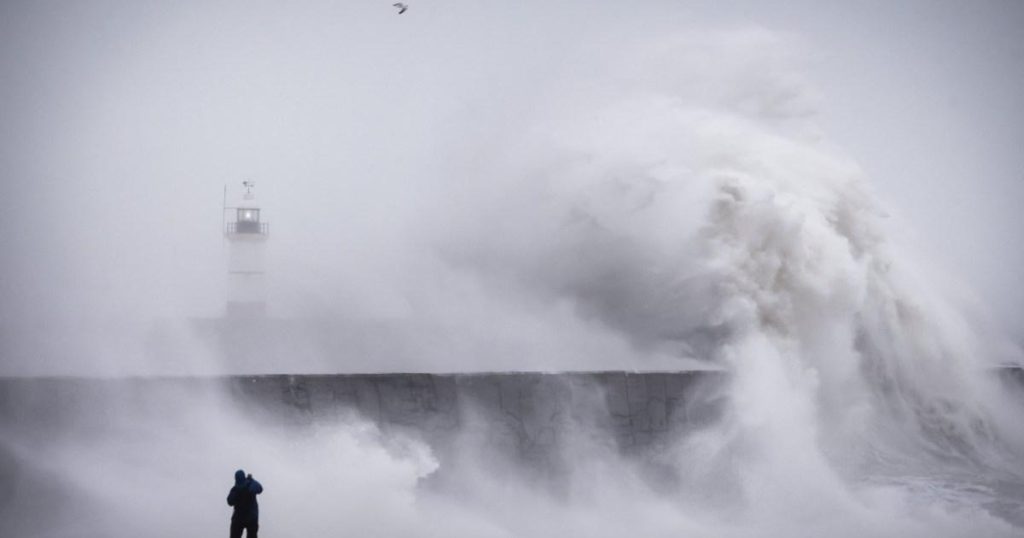The Met Office, the UK’s national weather service, has unveiled a fascinating glimpse into the potential future of storm naming, revealing a diverse and often humorous collection of suggestions submitted by the public. While the official list of storm names for the upcoming season has already been determined, the Met Office maintains a running list of potential names for future storms, culled from public submissions. This list reveals a captivating mix of traditional names, pop culture references, and whimsical suggestions, showcasing the public’s engagement with the storm naming process.
The storm naming process, a collaborative effort between the Met Office, Met Éireann (Ireland), and the Dutch national weather forecasting service, aims to improve communication and clarity regarding severe weather events. Storms are named when they have the potential to cause significant disruption or damage, warranting amber or red weather warnings. This proactive approach allows the public and emergency services to better prepare for and respond to adverse weather conditions. The current system, in place since 2015, has proven effective in raising public awareness and facilitating preparedness for severe weather.
Among the thousands of names suggested, some stand out for their sheer unconventionality. “Stormy McStormface,” a playful nod to the “Boaty McBoatface” internet phenomenon, emerged as a popular choice, reflecting the public’s penchant for lighthearted suggestions. Other humorous submissions include “Storm Fanny,” “Storm Cocks,” and “Storm Bigdickus,” demonstrating a sense of irreverence among some contributors. More conventional names, such as “Storm Windy” and “Storm Blowy,” also made the list, highlighting the range of suggestions received.
Beyond the humorous and unconventional suggestions, the list also reveals trends in naming preferences. Popular culture references, such as “Storm Fortnite w” and “Storm 200pumped,” inspired by the video game Fortnite, indicate the influence of gaming on contemporary language and culture. The suggestion of “Storm Stormzy,” after the popular British rapper, reflects the public’s admiration for celebrities and their desire to see them recognized in unexpected ways. These pop culture references highlight the dynamic and evolving nature of language and the ways in which popular trends infiltrate even the most serious of endeavors, such as weather forecasting.
While the more whimsical suggestions understandably garnered attention, the most popular submission was actually the name “Henna,” a name with diverse cultural origins. Henna is the Finnish feminine form of Heinrich, an Arabic name for John, and the Yiddish form of Hannah. It is also associated with a natural dye widely used in South Asian, Middle Eastern, and North African cultures. The overwhelming popularity of Henna, receiving eight times more nominations than the second most popular name, Sophie, underscores the public’s appreciation for culturally significant names and their potential to represent a wider range of backgrounds and experiences.
The top ten most suggested names also included more traditional names like Sophie, Jack, Charlie, David, George, Sarah, Grace, Harry, Ben, Emily, Vergil, Karen, and James. This mix of traditional and unconventional names reflects the diverse perspectives and preferences of the public. The Met Office’s consideration of such a wide range of suggestions reflects their commitment to engaging with the public and incorporating their input into the storm naming process. While not all suggested names will be used, the process allows for a sense of public ownership and involvement in an important aspect of weather forecasting.
The Met Office utilizes a pre-determined alphabetical list of storm names each year, with the next storm set to be named Storm Éowyn, followed by Floris, Gerben, Hugo, and Izzy. While the public’s suggestions are not immediately implemented, they are carefully considered for future storm seasons. The Met Office emphasizes that not all suggested names will be used, as some may be deemed inappropriate or unsuitable for various reasons. The organization aims to strike a balance between reflecting public input and maintaining professionalism and clarity in its communication of severe weather information.
The Met Office has specific criteria for naming storms, requiring the potential for significant disruption or damage, typically indicated by the issuance of amber or red weather warnings. Certain letters of the alphabet – Q, U, X, Y, and Z – are excluded from the naming convention, although the public has still submitted suggestions incorporating these letters. The Met Office welcomes public engagement in the storm naming process, viewing it as a valuable opportunity to raise awareness about severe weather and its potential impact. By involving the public, the Met Office aims to foster a sense of shared responsibility for weather preparedness and enhance the effectiveness of its communication strategies. The diverse and often humorous suggestions received demonstrate the public’s creativity and their willingness to engage with a process that directly affects their safety and well-being.











